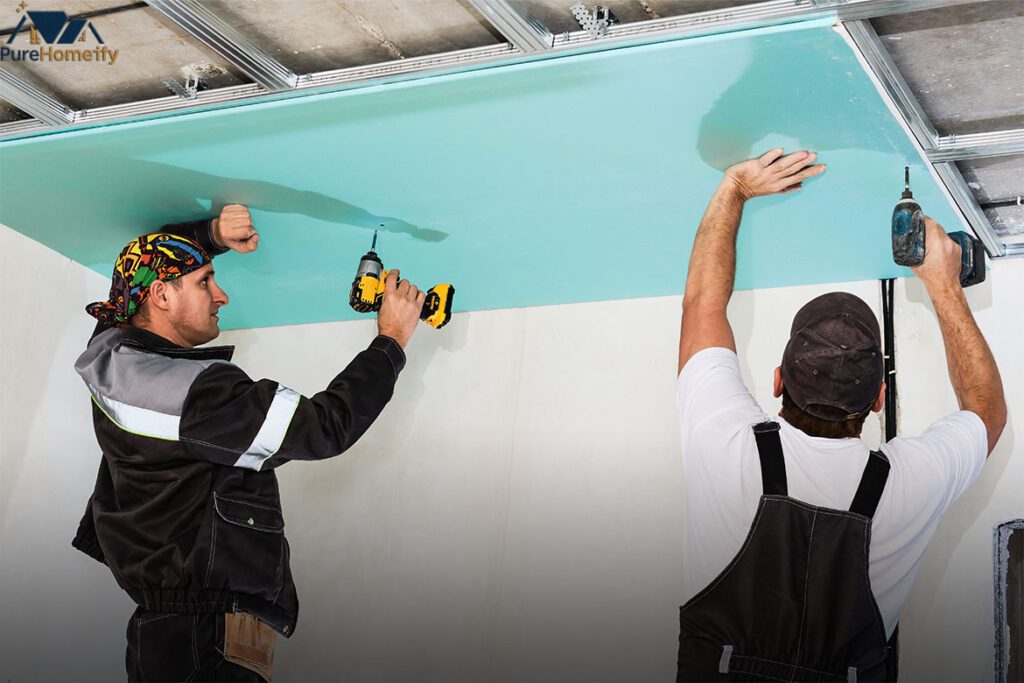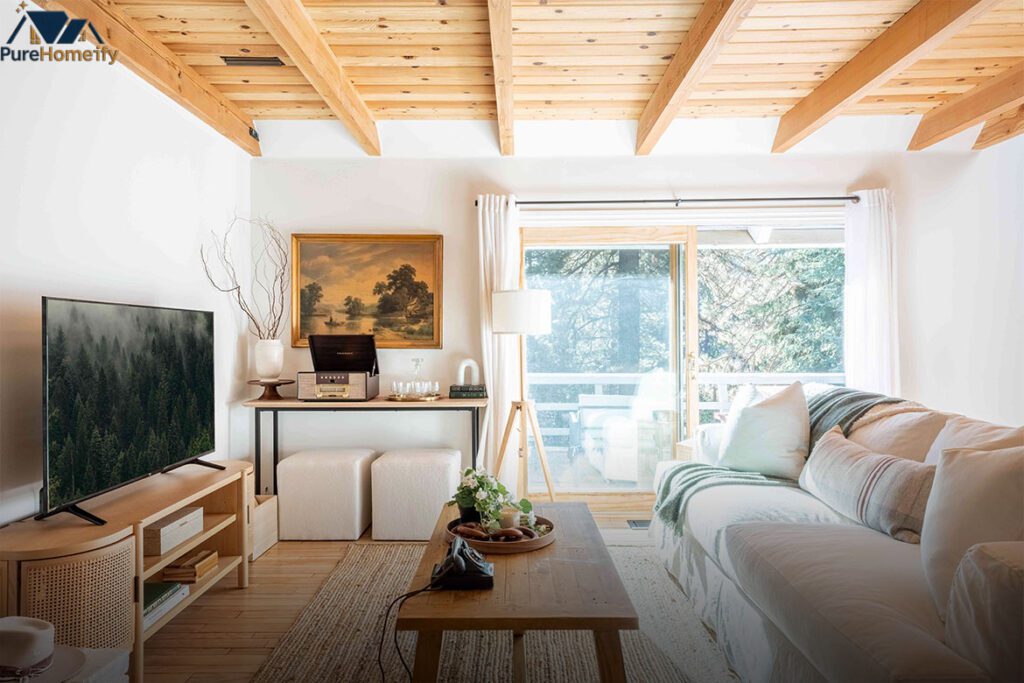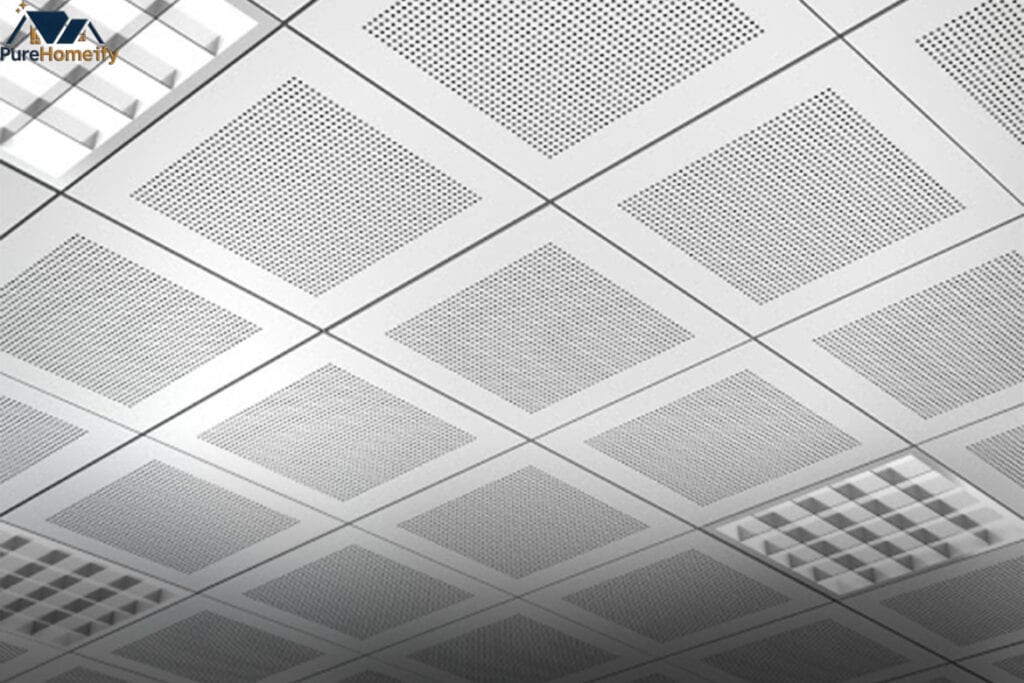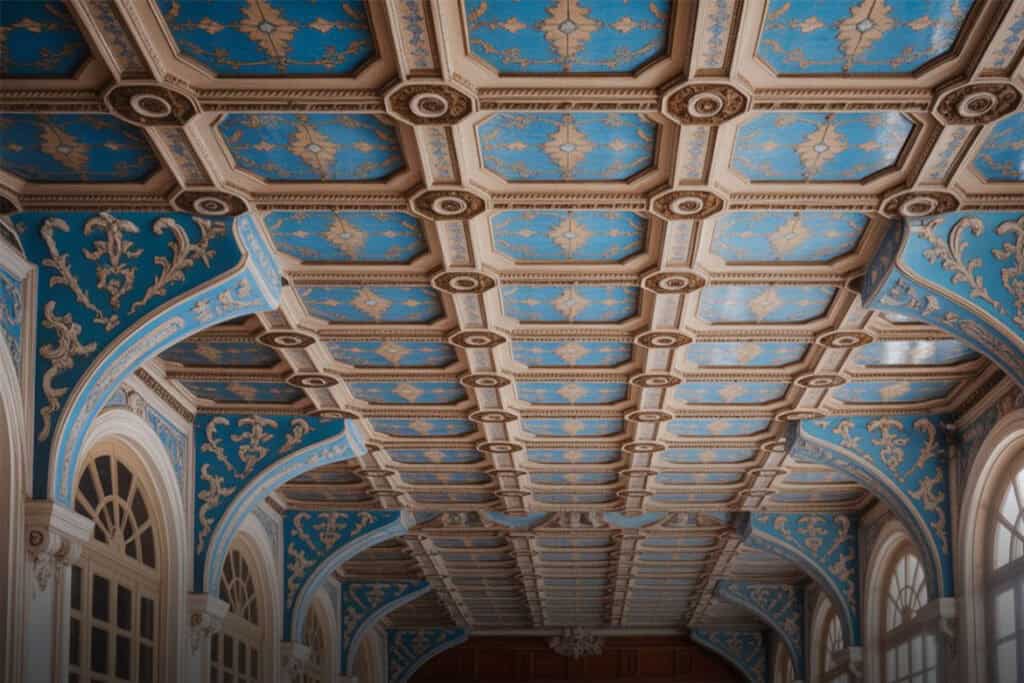Introduction to Ceiling Materials
When you think about your home, you probably focus on the walls, flooring, or furniture. But have you ever stopped to ask, what are ceilings made of? Ceilings shape the feel of a room, affect light, and even control noise. They are more than a cover over your head; they influence comfort and design.
In the U.S., there are many ceiling material options that suit different needs. From traditional vs modern ceilings to energy-efficient ceilings, homeowners have choices that blend beauty with function. Whether you want luxury, durability, or cost-effective ceilings, understanding the best fit makes all the difference.
Drywall (Gypsum Board) Ceilings

The most common answer to what is ceilings made of is the drywall ceiling. Also called a gypsum board ceiling, this material is widely used in American homes. It is affordable, quick to install, and works like a blank canvas for paint, texture, or even paneling. Contractors prefer it because the ceiling installation process is simple and efficient.
Drywall also brings practical benefits. With proper acoustic insulation, a drywall ceiling can reduce noise and make rooms quieter. Its smooth surface allows endless ceiling finishes and textures, from modern matte looks to glossy designs. However, it is not naturally moisture-resistant, so bathrooms or basements may need extra protection.
Plaster and Plasterboard Ceilings
Long before drywall, the plaster ceiling was the standard in American homes. Even today, it adds elegance and a timeless finish. A plasterboard ceiling creates a seamless surface with strong fire-resistant ceilings properties. Its classic style makes it popular in high-end homes and historic restorations.
The advantage of plaster is its flexibility. You can mold it into unique shapes, curves, or ornate designs. This makes it perfect for ceiling design ideas where details matter. Plaster can last for decades with little ceiling maintenance and cleaning, making it one of the most durable ceiling materials for long-term use.
Wooden Ceilings

Few things bring warmth like a wooden ceiling. Also known as a timber ceiling, it adds character with natural grains and colors. In cabins, farmhouses, and modern lofts, wood makes a strong style statement. It is also considered one of the most eco-friendly ceiling materials.
Wood not only looks good but also performs well. It naturally offers soundproofing ceiling qualities, helping rooms feel cozy and quiet. Homeowners often choose wood because of its ceiling durability and longevity. With proper care and ceiling maintenance and cleaning, a wooden ceiling can last for generations.
Metal Ceilings

For a bold and modern touch, many homeowners turn to the metal ceiling. Common choices include aluminum and steel, both known for strength and style. A metal ceiling is highly resistant to fire, making it one of the safest ceiling material options for kitchens or commercial spaces.
Another benefit is that metal reflects light, often improving room brightness and cutting energy costs. It is also easy when it comes to ceiling repair and access, since panels can be removed or cleaned with little effort. For modern ceiling designs, nothing beats the sleek look of polished or patterned metal.
Tile Ceilings

A tile ceiling is another versatile choice, often used in bathrooms, basements, and offices. Tiles can be ceramic, tin, or acoustic ceiling tiles, each offering different benefits. For example, ceramic works best in damp areas, while tin adds vintage charm.
Tiles are known for being moisture-resistant ceilings and low-maintenance. With simple wiping, they stay clean and bright for years. They also give you plenty of ceiling aesthetics and styles, from small patterned tiles to large panels. This flexibility makes them one of the best ceiling materials for homes with unique design needs.
False and Suspended Ceilings
When discussing popular ceiling types, the false ceiling or suspended ceiling comes up often. Also called a drop ceiling, it is designed to hide pipes, wiring, or ducts while still offering access when needed. This makes it a practical choice for offices and basements.
Suspended systems can also help with ceiling lighting integration and acoustic insulation. Some tiles even improve energy use by adding insulation, which supports energy-efficient ceilings. For homeowners wanting modern convenience and easy ceiling repair and access, these ceilings are a smart solution.
Alternative Ceiling Materials
Not all homes stick to the usual. Some go for unique and durable ceiling materials like glass, cork, or fabric. These alternative ceiling materials bring bold style and personal expression into living spaces. For example, cork is sustainable, while glass creates striking ceiling design ideas with light play.
Other creative options include fabric or synthetic leather. While not common in every home, these ceiling material options work well in theaters, studios, or luxury interiors. They highlight how home improvement ceilings can combine design and function beyond standard choices.
Choosing the Right Ceiling Material for Your Home
When deciding what are ceilings made of, your choice should match lifestyle, budget, and climate. A homeowner in humid Florida may prefer moisture-resistant ceilings, while someone in a New York loft might choose metal ceilings for an urban vibe.
Here is a quick comparison of types of ceiling materials to help you decide:
| Ceiling Type | Pros | Cons | Best Use |
| Drywall | Low cost, easy install | Not moisture-proof | Living rooms, bedrooms |
| Plaster | Elegant, long-lasting | Labor-intensive | Historic homes, luxury spaces |
| Wood | Warm, eco-friendly | Needs upkeep | Cabins, farmhouses |
| Metal | Fireproof, reflective | Can dent | Kitchens, modern lofts |
| Tile | Moisture-resistant | Limited styles | Bathrooms, basements |
| Suspended | Easy access, hides wires | Reduces height | Offices, basements |
| Alternative | Unique designs | Expensive | Studios, creative homes |
Conclusion
So, what are ceilings made of? The answer depends on your taste, budget, and goals. Whether you love the charm of a plaster ceiling, the practicality of a drywall ceiling, or the boldness of a metal ceiling, your choice shapes the entire room.
The best advice is to think about comfort, style, and long-term care. With so many ceiling material options, from modern ceiling designs to traditional vs modern ceilings, you can create a space that is both beautiful and functional.

